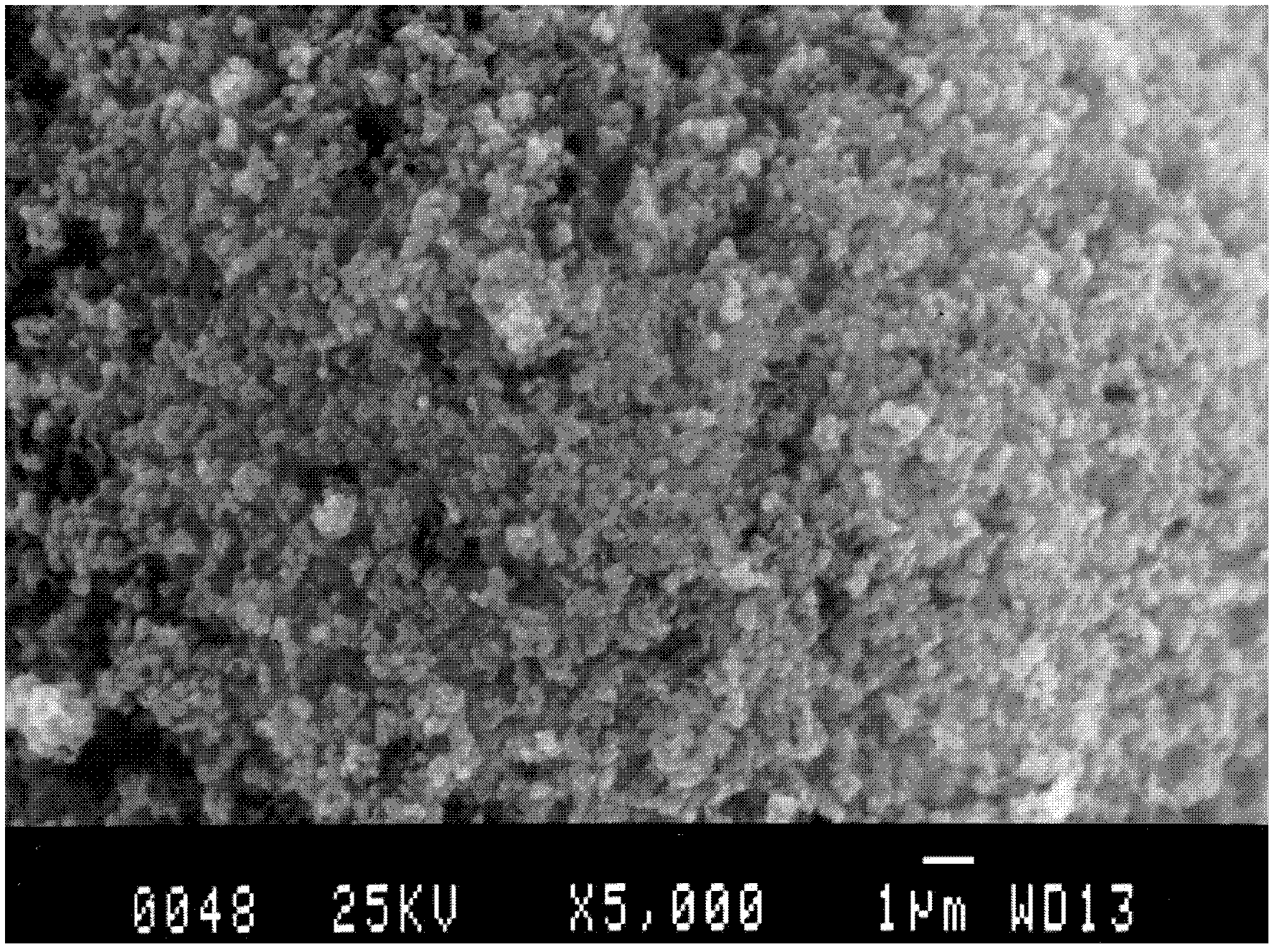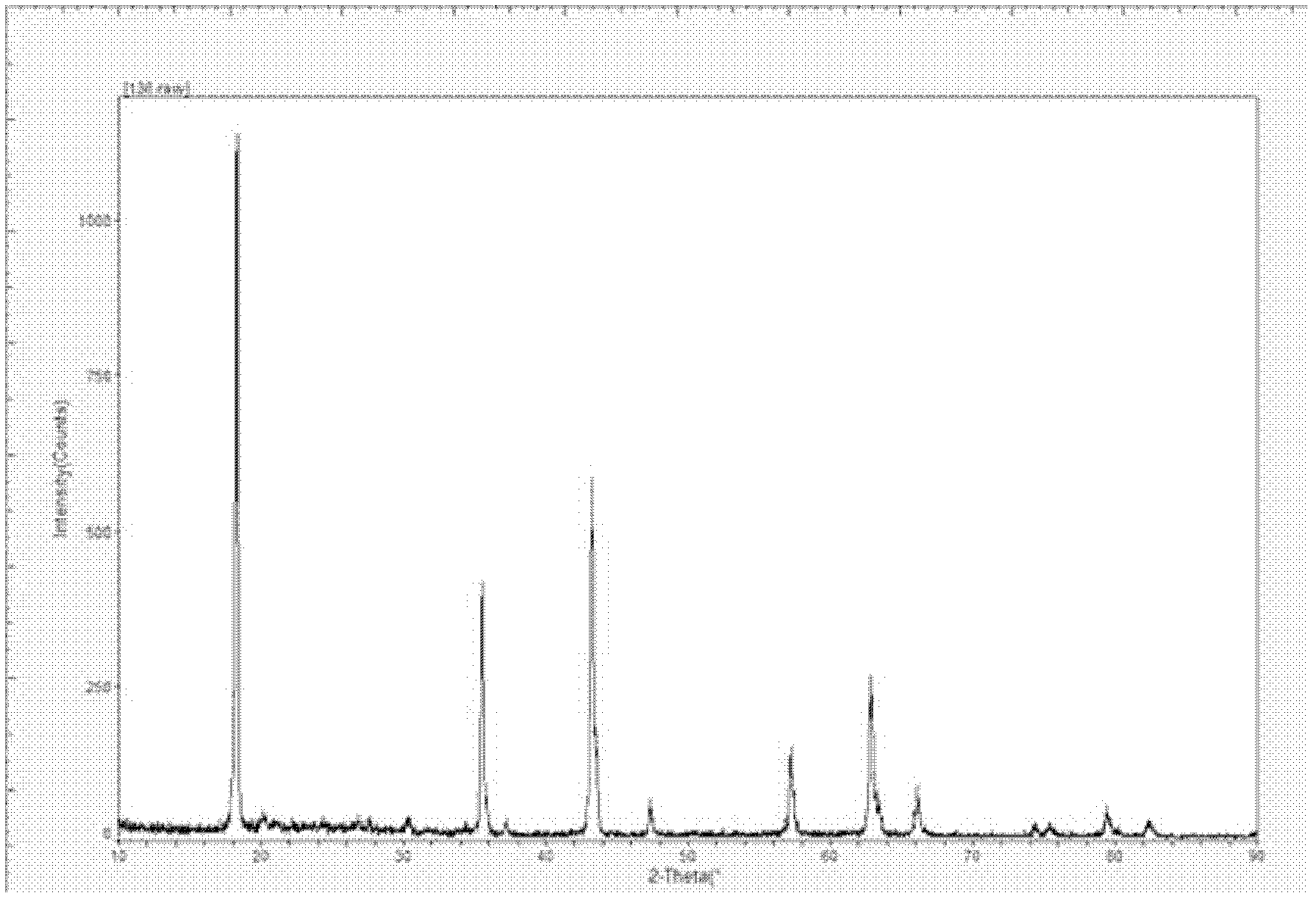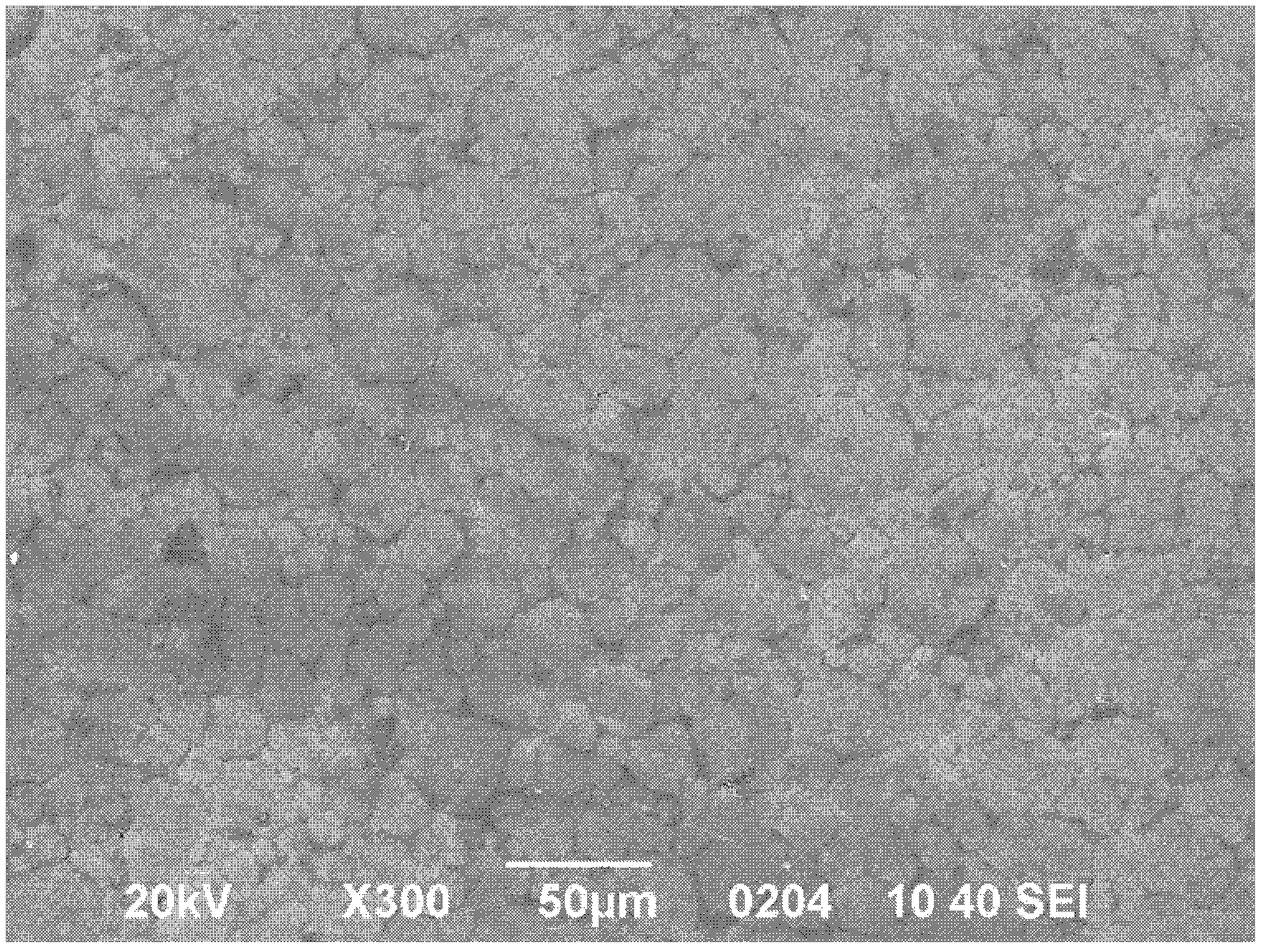Modified lithium titanate material used for lithium ion battery and manufacturing method thereof
A lithium ion battery and lithium titanate technology, applied in battery electrodes, circuits, electrical components, etc., can solve the problems of restricting the growth of lithium titanate particles, difficulty in mass production of lithium titanate, etc., and achieve environmental control. Effect
- Summary
- Abstract
- Description
- Claims
- Application Information
AI Technical Summary
Problems solved by technology
Method used
Image
Examples
Embodiment 1
[0047] Weigh 90g of lithium carbonate, 110g of anatase titanium dioxide, 20g of magnesium oxide, and 1000g of sodium chloride, respectively, and add them to a ball mill tank for grinding for 2 hours; use a cake press to form a cake; under nitrogen protection, grind the cake The material is placed in a tube-type sintering furnace and calcined at a temperature of 900°C for 5 hours, and then the sample is cooled to room temperature with the furnace temperature; the sintered block is placed in a ball mill and ground into a powder with a diameter of less than 10 microns , add water to wash twice, each time with 5000g of water; after filtering, use a blower to dry at 200°C for 2 hours to obtain the product modified lithium titanate.
Embodiment 2
[0049] Weigh 110g of lithium hydroxide, 90g of anatase titanium dioxide, 10g of silicon oxide, and 1500g of potassium chloride, and add them into a ball mill jar for grinding for 8 hours; The grinding material is placed in a tube-type sintering furnace and calcined for 10 hours at a temperature of 600°C, and then the sample is cooled to 150°C with the furnace temperature; the sintered block is placed in a ball mill and ground to a diameter less than 10 microns The powder was washed twice with water, each time with 6000 g of water; after filtration, it was dried with a blower at 100°C for 6 hours to obtain the product modified lithium titanate.
Embodiment 3
[0051] Weigh 2000g of lithium chloride, 100g of anatase titanium dioxide, and 5g of neodymium nitrate, and add them into a ball mill jar for grinding for 6 hours; press them into a cake shape with a cake press machine; In a sintering furnace with a temperature of 800 ° C for 7 hours, the sample was cooled to room temperature with the furnace temperature; the sintered block was ground into a powder with a diameter of less than 10 microns in a ball mill, and washed with water for two Each time, use 6500g of water each time; after filtering, use a blower to dry at 150°C for 4 hours to obtain the product modified lithium titanate.
PUM
| Property | Measurement | Unit |
|---|---|---|
| Melting point | aaaaa | aaaaa |
| Boiling point | aaaaa | aaaaa |
Abstract
Description
Claims
Application Information
 Login to View More
Login to View More - R&D
- Intellectual Property
- Life Sciences
- Materials
- Tech Scout
- Unparalleled Data Quality
- Higher Quality Content
- 60% Fewer Hallucinations
Browse by: Latest US Patents, China's latest patents, Technical Efficacy Thesaurus, Application Domain, Technology Topic, Popular Technical Reports.
© 2025 PatSnap. All rights reserved.Legal|Privacy policy|Modern Slavery Act Transparency Statement|Sitemap|About US| Contact US: help@patsnap.com



